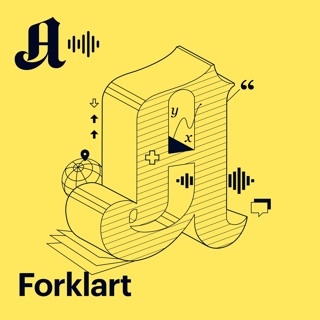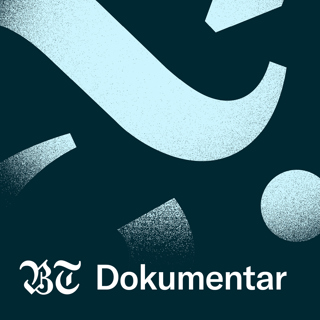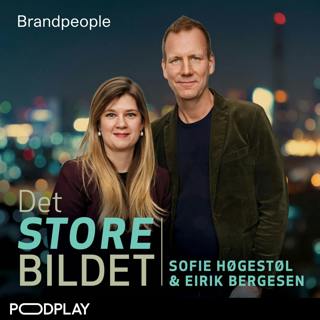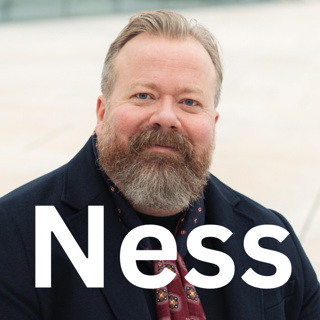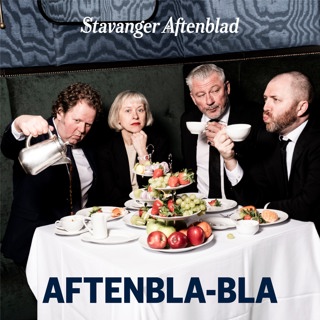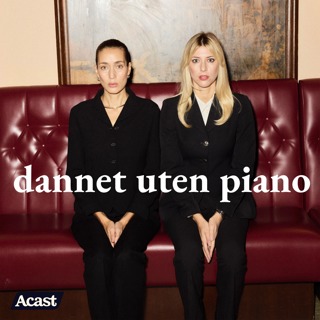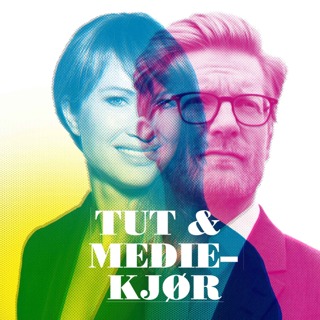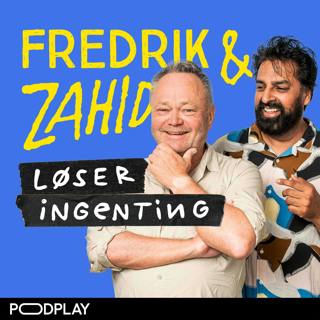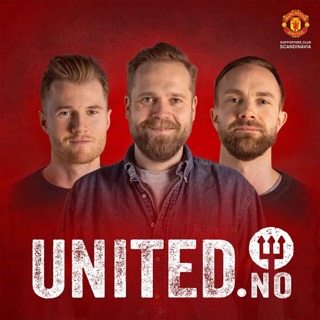
Fashion Industry Update: New Collaborations, Workwear Innovations, and the Evolving Retail Landscape
FASHION INDUSTRY UPDATE: MID-MAY 2025As we approach the unofficial start of summer, the fashion industry is showing signs of cautious adaptation amid continuing market challenges. In the past 48 hours, several notable developments have shaped the landscape.STAUD and Birkenstock have just launched their summer sandal collaboration, marking one of May's most anticipated releases for the season ahead. This partnership represents the ongoing trend of luxury labels partnering with contemporary brands to create must-have seasonal items.The workwear sector is seeing innovation with Argent and Margaux's new three-piece shoe collection featuring cream loafer mules, snakeskin ballet flats, and black strappy sandals. As Sarah Pierson, Margaux's co-founder, stated, they "loved the idea of playing with the notion of workwear," reflecting the evolving nature of professional attire post-pandemic.New Balance has expanded its annual Grey Days celebration, announcing 21 sneaker drops including the rare New Balance 1300JP, which appears only once every five years.Luxury retail continues to seek innovative customer experiences, with Roger Vivier opening an ephemeral boutique in Westfield Sydney showcasing their High Summer 2025 collection "Un Été à Paris," featuring Parisian-inspired aesthetics through May 26.These developments occur against a challenging backdrop. According to the recent BoF-McKinsey State of Fashion Executive Survey, 39% of fashion executives anticipate worsening industry conditions this year, while 41% expect conditions to remain unchanged. Supply chains continue facing "incredible duress" due to raw material procurement issues, labor challenges, and logistics management difficulties.Industry analysts characterize 2025 as potentially "a time of reckoning for many brands," though opportunities remain for companies able to "move nimbly and adapt quickly to upheavals in a chaotic marketplace."The raffia tote trend continues gaining momentum, with New York-based Lily Sisto's collection with Spanish accessories label Mercules featuring crab-shaped bag charms, confirming the accessories trend remains strong heading into summer.This content was created in partnership and with the help of Artificial Intelligence AI
14 Mai 2min

Fashion News Roundup: Gucci's Cruise 2026, Polka Dot Trends, and Collaborative Collections
Fashion Industry Update: May 2025The fashion world has been buzzing with activity over the past 48 hours, headlined by the 2025 Met Gala which celebrated the "Superfine: Tailoring Black Style" exhibition. The prestigious event brought together influential figures including Rihanna, A$AP Rocky, and Lewis Hamilton, showcasing Black dandyism and its role in shaping identities from the 18th century to today. The exhibition officially opened to the public on May 10.In business news, OTB Group, owner of luxury brands like Jil Sander, Maison Margiela, Diesel, and Marni, has warned of potential price increases up to 9% if proposed US tariffs take effect. This reflects broader industry concerns, as reports indicate that 98% of clothing sold in the US is imported, making fashion one of the sectors most vulnerable to new trade policies.Meanwhile, collaborative collections are defining the summer fashion landscape. STAUD and Birkenstock have launched a new summer sandal collaboration, while Argent and Margaux have introduced a three-piece shoe collection featuring cream loafer mules, snakeskin ballet flats, and black strappy sandals designed to elevate workwear.Looking ahead, Gucci has announced plans to open its Florence brand archive to spectators at Palazzo Settimanni for its Cruise 2026 show on May 15, generating excitement among fashion enthusiasts.Current trend forecasts show polka dots making a strong comeback for Spring/Summer 2025, with brands like Jacquemus, Acne Studios, and Valentino incorporating the pattern into their collections. Another notable trend is ballet-inspired sneakers, particularly Puma's Speedcat, which blends athletic functionality with dance-inspired aesthetics and has become one of 2025's must-have footwear items.As Memorial Day approaches, brands are accelerating their summer-focused offerings despite the official season not beginning until June 20, reflecting the industry's eagerness to capitalize on consumers' seasonal shopping habits.This content was created in partnership and with the help of Artificial Intelligence AI
13 Mai 2min

Fashion Industry Insights: Collaborations, Tariffs, and the Tailored Met Gala in 2025
FASHION INDUSTRY UPDATE: MAY 2025The fashion world is buzzing with summer preparations despite being weeks away from the official start of the season. In the past 48 hours, industry activity has centered around collaborative launches and exhibition openings that signal strong consumer interest in seasonal offerings.STAUD and Birkenstock have just released their summer sandal collaboration, positioned as a must-have for the upcoming season. The partnership exemplifies the industry's current focus on creating buzz-worthy seasonal items to drive consumer spending amid economic uncertainties.Meanwhile, Argent and Margaux have unveiled a three-piece shoe collection featuring cream loafer mules, snakeskin ballet flats, and black strappy sandals. This collaboration specifically targets the workwear market, with Margaux co-founder Sarah Pierson highlighting their intention to "play with the notion of workwear" for summer office attire.The 2025 Met Gala, held just days ago on May 7th, showcased the theme "Tailored for You," reflecting the industry's current emphasis on personalization and bespoke offerings. The event has traditionally served as a bellwether for upcoming fashion trends.On the luxury front, Christian Dior's "Designer of Dreams" exhibition opened in Seoul on April 19th and will run until July 13th. This marks the exhibition's first appearance in South Korea, demonstrating luxury brands' continued investment in Asian markets.Industry challenges persist, with reports indicating fashion may be among the hardest hit sectors if proposed reciprocal import tariffs are implemented, as 98% of clothing sold in the US is imported. This looming threat has created uncertainty throughout supply chains.The current market sentiment remains cautious, contrasting with the more optimistic outlook observed in early 2022. Rising inflation continues to pressure both consumer spending and operational costs across the industry.This content was created in partnership and with the help of Artificial Intelligence AI
12 Mai 2min

Fashion's Evolving Landscape: Mergers, Creative Shifts, and Sustainability Challenges
In the past 48 hours, the global fashion industry has witnessed significant shifts reflecting both ongoing challenges and bold new directions. One of the most headline-grabbing moves was Prada’s acquisition of Versace for 1.25 billion euros, signaling heightened consolidation at the luxury end of the market and a drive for scale in an increasingly competitive landscape. Jonathan Anderson’s appointment as Dior’s new menswear creative director also marks a sharp change in leadership at a critical time, offering the brand fresh creative energy as it navigates evolving consumer tastes.The first week of May 2025 has seen a continued emphasis on partnerships and collaborations. Christian Louboutin’s latest tie-up and Mulberry’s campaign highlighting British craftsmanship exemplify the sector’s pursuit of exclusivity and heritage appeal. Meanwhile, innovation and efficiency are in sharper focus as supply chain resilience becomes a pressing concern. New tools such as Waste Insight, which leverages algorithms to optimize fabric use and minimize waste, point to a tech-driven push for sustainability and cost control.Consumer behavior continues to shift. While there is some cooling off among younger shoppers, fashion labels are accelerating efforts to court older consumers, whose share of total fashion spending is growing. Challenger brands in sportswear and other categories are leveraging their agility and digital prowess to win over these evolving market segments, often outpacing established players.Recent data from industry analysts highlight that climate change and government regulation are intensifying pressure to reduce emissions and fashion waste. Yet, even as sustainability remains central to long-term strategy, many consumers are reluctant to pay premiums for eco-friendly goods, forcing brands to balance green initiatives with affordability.Price increases remain moderate compared to the sharp inflation seen in late 2022 and early 2023, but margin pressures persist, driving brands to optimize inventories through nearshoring and digital inventory management.In summary, the industry is entering mid-2025 with mergers, creative director changes, and an unrelenting push for efficiency and sustainability. While leaders like Prada are doubling down on scale, nimble newcomers and tech innovations are reshaping the competitive field, and consumer demand is fragmenting by age and values. These changes are setting the stage for another transitional, unpredictable year for fashion.This content was created in partnership and with the help of Artificial Intelligence AI
9 Mai 2min

Fashion Industry Update: Prada Acquires Versace, Brands Target Silver Generation, and Sustainability Innovations
Fashion Industry Update: May 2025 State of AnalysisThe fashion industry continues to experience significant shifts in early May 2025, with major leadership changes and corporate acquisitions making headlines. In the past 48 hours, the industry has been processing the recent appointment of Jonathan Anderson as the new creative director of menswear at Dior, marking another move in what industry insiders are calling a game of "creative director musical chairs"[1].Perhaps the most substantial recent development is Prada's acquisition of Versace for €1.25 billion, a move that signals major consolidation among luxury fashion houses[1]. This acquisition represents one of the most significant deals in the fashion sector this year.On the collaboration front, Christian Louboutin has announced a new partnership, while Mulberry has launched a campaign celebrating British craftsmanship[1]. These initiatives highlight the industry's continued focus on heritage and craftsmanship as selling points.Market analysts note that brands are increasingly targeting the "silver generation" of consumers over 50, a demographic previously overlooked despite their growing spending power[2]. This shift represents a strategic pivot as younger consumer markets become increasingly saturated.In the sportswear category, incumbent brands face mounting pressure from smaller, more innovative "challenger" brands that are rapidly capturing market share[2]. This trend underscores the advantage of agility in today's market.Sustainability remains a key focus, with several zero waste initiatives gaining traction. The digital tool "Waste Insight" has been developed to help design teams optimize fabric usage through advanced algorithms[3]. Additionally, registration is open for the 2025 Online Zero Waste Masterclass scheduled for August 8th[3].Street fashion in Milan shows vibrant summer trends with temperatures at 25°C, indicating strong consumer engagement with seasonal offerings[4].As economic uncertainties persist, fashion executives must navigate complex market dynamics while pursuing sustainable practices and targeting diverse consumer segments to find pockets of growth in challenging conditions.This content was created in partnership and with the help of Artificial Intelligence AI
8 Mai 2min

Fashion's Bold Moves, Shifting Trends: Luxury Acquisitions, Collaborations, and Evolving Consumer Behavior
In the past 48 hours, the fashion industry has experienced a remarkable mix of bold moves, new partnerships, and ongoing market adaptation. The headline news is Prada’s acquisition of Versace for 1.25 billion euros, a deal that cements the luxury conglomerate trend and signals ongoing consolidation among major players. This acquisition is expected to reshape the competitive landscape, with Prada gaining access to Versace’s strong global brand and youthful following. Meanwhile, creative leadership continues to shift, with Jonathan Anderson announced as the new creative director of Dior menswear, reflecting the industry’s ongoing search for fresh perspectives and creative innovation.On the collaboration front, Christian Louboutin’s new project and Mulberry’s campaign celebrating British craftsmanship are examples of brands seeking differentiated consumer engagement through storytelling and unique product drops. These strategic shifts come as midyear market momentum remains muted, with the industry facing slower sales growth compared to previous years.Consumer behavior is also evolving. While younger shoppers remain important, brands are now courting the growing over-50 consumer cohort, whose spending power and style influence are rising. Challenger brands, especially in sportswear, are rapidly capturing market share from established names by focusing on innovation and direct customer connection.Supply chain flexibility remains a top priority. Ongoing global trade shifts are prompting retailers to emphasize nearshoring and more agile manufacturing. Recent weeks have seen increased investment in technology to manage inventory and reduce both excess and shortfalls. At the same time, climate concerns and regulatory pressure to reduce emissions and waste continue to drive advances in sustainable practices, even though consumers are not always willing to pay extra for eco-friendly products.Highlighting cultural leadership, the 2025 Met Gala and accompanying Costume Institute exhibit are sparking historical conversations and shaping trends by spotlighting 250 years of Black men’s fashion. This focus signals how major events continue to steer dialogue and influence design directions industry-wide.Altogether, compared to last year’s fragile optimism, the current mood is characterized by strategic consolidation, heightened competition, and cautious investment, as leaders rethink approaches in a complex, fast-changing environment. This dynamic will likely persist as brands and retailers balance short-term pressures with the need for long-term innovation and cultural relevance.This content was created in partnership and with the help of Artificial Intelligence AI
7 Mai 2min

Fashion Industry Navigates Sustainability Challenges and Demographic Shifts in 2025
Fashion Industry Current State Analysis: May 2025The fashion industry continues to navigate complex market dynamics in early May 2025. Sustainability remains a central focus, with recent legal challenges highlighting accountability. A German court just ruled against Adidas, banning their "climate neutral by 2030" advertising claims due to ambiguity and lack of transparency regarding carbon offset usage.Consumer behavior trends show promising developments for secondhand markets. Vinted reported a 36% revenue increase in 2024, reflecting European consumers' growing interest in resale platforms as cost-saving measures. Additionally, product refill sales increased 20% in Q1 2025 compared to 2024, representing a quadrupling of sales since tracking began.Major brands are expanding their global presence through exhibitions and collaborations. Dior's "Designer of Dreams" exhibition opened in Seoul at Dongdaemun Design Plaza, running from April 19 to July 13, showcasing the brand's evolution from the 1947 "New Look" to contemporary designs. Christian Louboutin launched a vibrant collaboration with artist Otis Carey.Demographic targeting is shifting as brands recognize the growing importance of older consumers. Industry analysts note that the "silver generation" of shoppers over 50 represents an increasingly valuable market segment for 2025, contrasting with the historical focus on younger demographics.Supply chain reconfiguration continues with companies accelerating nearshoring efforts and prioritizing manufacturing in geopolitically aligned countries. These adjustments aim to reduce inventory challenges while addressing margin pressures and sustainability requirements.Despite economic uncertainties, innovative "challenger" brands are capturing market share from established players, particularly in sportswear categories, by demonstrating greater adaptability to changing market conditions.The fashion landscape in May 2025 reflects an industry balancing immediate economic pressures with longer-term sustainability commitments, while adapting to evolving consumer preferences across different demographic segments.This content was created in partnership and with the help of Artificial Intelligence AI
6 Mai 2min

Fashion's Resilience: Navigating Headwinds and Sparking Innovation in Uncertain Times
In the past 48 hours, the global fashion industry continues to face significant headwinds but also sees sparks of innovation. The latest BoF and McKinsey survey of 345 fashion executives reveals deep industry pessimism, with 39 percent expecting conditions to worsen in 2025, and only 20 percent seeing potential improvement. This sentiment continues a trend from previous years, with pessimism now becoming the norm amid shifting consumer habits and unpredictable macroeconomic conditions.Supply chain instability remains a persistent challenge. Labor shortages, fluctuating raw material costs, and ongoing logistics disruptions are pressuring brands at multiple stages of production and distribution. These issues are prompting some companies to overhaul sourcing strategies and invest in automation and digital supply chain tracking. Notably, brands that move quickly to adapt are finding openings, especially in niche markets or by leveraging e-commerce innovations.Despite obstacles, innovation is vibrant. This week, the Global Fashion Agenda and PDS Ventures named nine startups to the Trailblazer Programme 2025 shortlist, highlighting solutions in circular materials, sustainable manufacturing, and digital fashion. Such developments demonstrate how the industry is responding to sustainability and efficiency demands, as both investors and consumers push for responsible alternatives.On the consumer side, behavior continues to shift toward conscious shopping and value-seeking. High inflation and stagnant wage growth are driving more shoppers to delay purchases or favor discounted and secondhand apparel. Industry leaders like Zara and H&M have responded by expanding their pre-owned and recycled product lines, while luxury brands are increasing collaborations with resale platforms to capture shifting demand.No major regulatory changes have been recorded this week, but ongoing European Union discussions about stricter environmental standards are raising the stakes for global brands, encouraging early compliance efforts and improved transparency.Overall, while the mood in the sector remains cautious compared to the optimism of the post-pandemic rebound, the current environment is marked by a race to innovate, astute cost management, and a push toward sustainability. Compared to last year, executive anxiety is higher, but so is the drive to find competitive advantages through partnership, technology, and a more responsible approach to fashion.This content was created in partnership and with the help of Artificial Intelligence AI
2 Mai 2min





